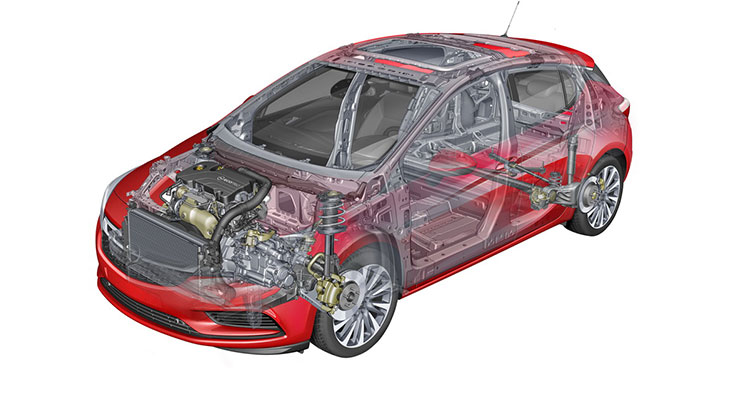Ever since the new Opel Astra premiered, the German car manufacturer continuously mentions its weight advantage over the previous model.
Yes, it may sound a little boring, but shaving consistent weight off a car is a remarkable achievement, nonetheless.
It requires abstract thinking and engineering, focusing on certain aspects that mainly go unnoticed compared to the overall rig. That said, the new Astra weighs up to 200 Kilograms (440 lbs) less than the previous model (depending on the model and trim level), and at least 120 kilograms (264 lbs) in any given case.
In order to make the automobile more bulimic, the body shell lost 20 percent of its weight, down from 357 kilograms (797 lbs) to 280 (617 lbs). Moreover, another 50 kilograms (110) were saved in the design of the chassis components.
Combine this with some top-of-the-notch aerodynamic cues, including full underbody paneling, and you’ve got yourself a pretty neat rig. But this isn’t the end of the story; even the exhaust systems weighs 4.5 kilograms (10 lbs) less now, while the smaller wheels and tires shave up to 11.5 kilograms (25 lbs) from the total package. That’s an impressive unsprung weight advantage, which does wonders to the car’s handling and performance.
In fact, as the system now uses less mass to decelerate, a more compact brake design weighing 10 kilograms (22 lbs) less was implemented, delivering even better performance. After being optimized aerodynamically to reduce fuel economy, it seems that the weight of the Astra was the next big thing concerning the engineers. But how more analytical can you get?
The following statement may sound very German, but after 5 years of detailed work, the development team presented seats that are more functional, comfortable and weigh around a total of 10 kilograms (22 lbs) less than in the previous model. There are entire cars developed in less time than that and this just proves the commitment and the level of engineering that went into a… mainstream hatchback. As Opel says, “state of the art packaging calculation methods and lighter polyurethane foam were built under the robust seat upholstery”.
Given all this, saying that the new light, all-aluminum engine blocks and “ultra-modern” transmissions are 10 kilograms (22 lbs) lighter doesn’t even surprise us anymore.
That said, just imagine how the OPC variant will be.












